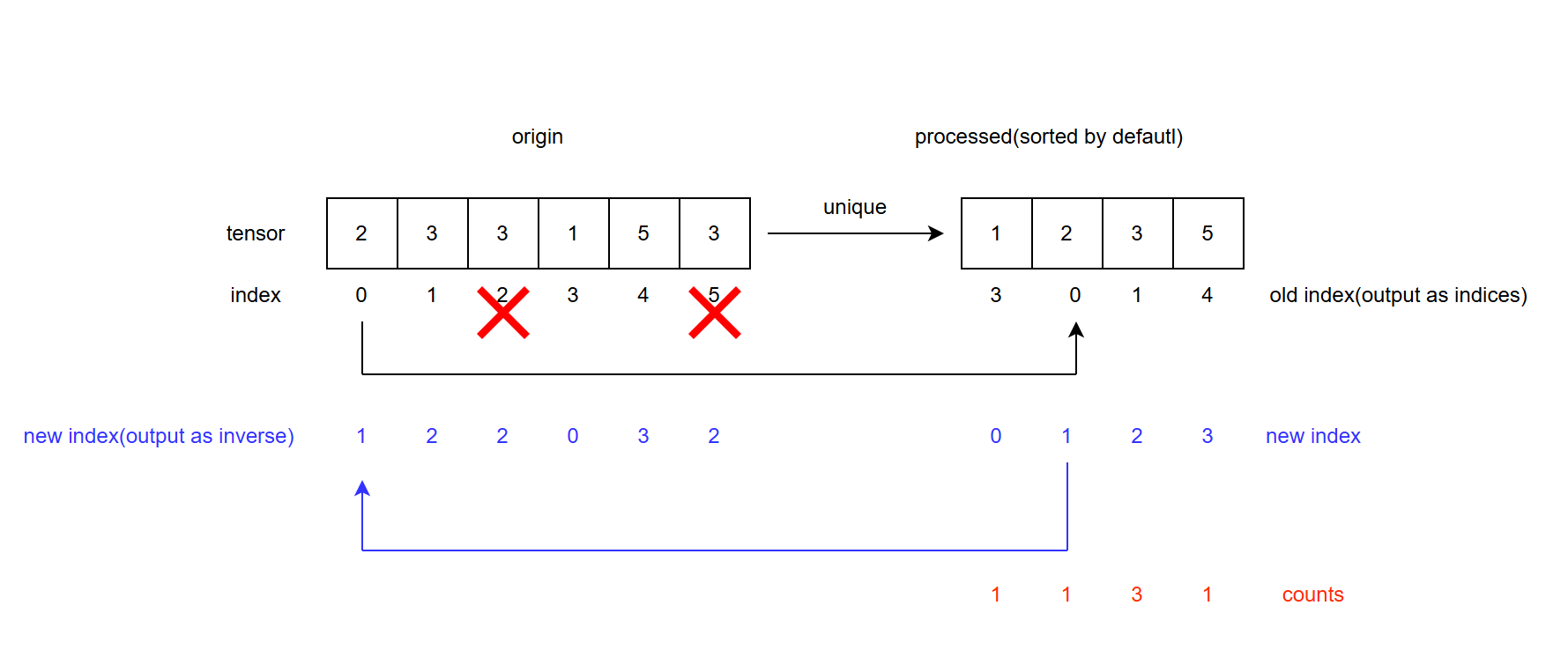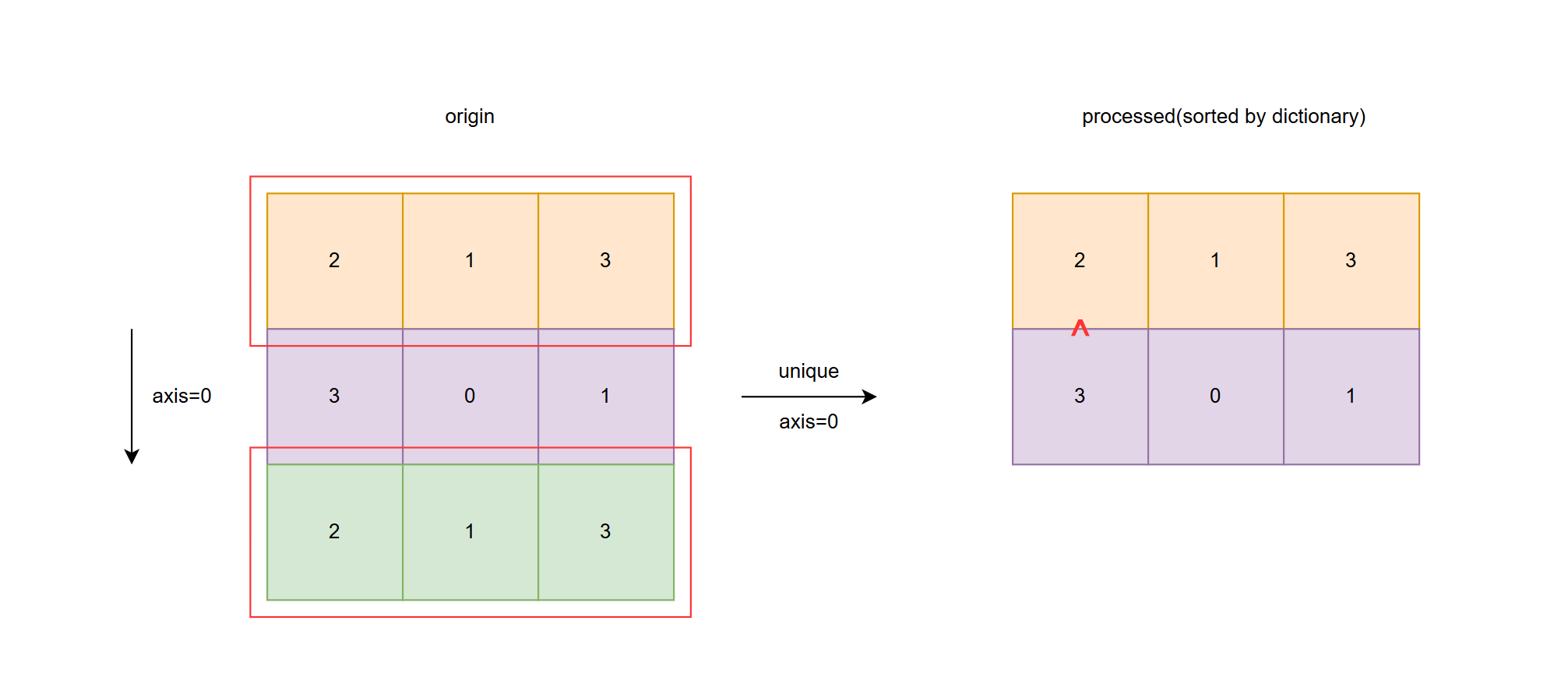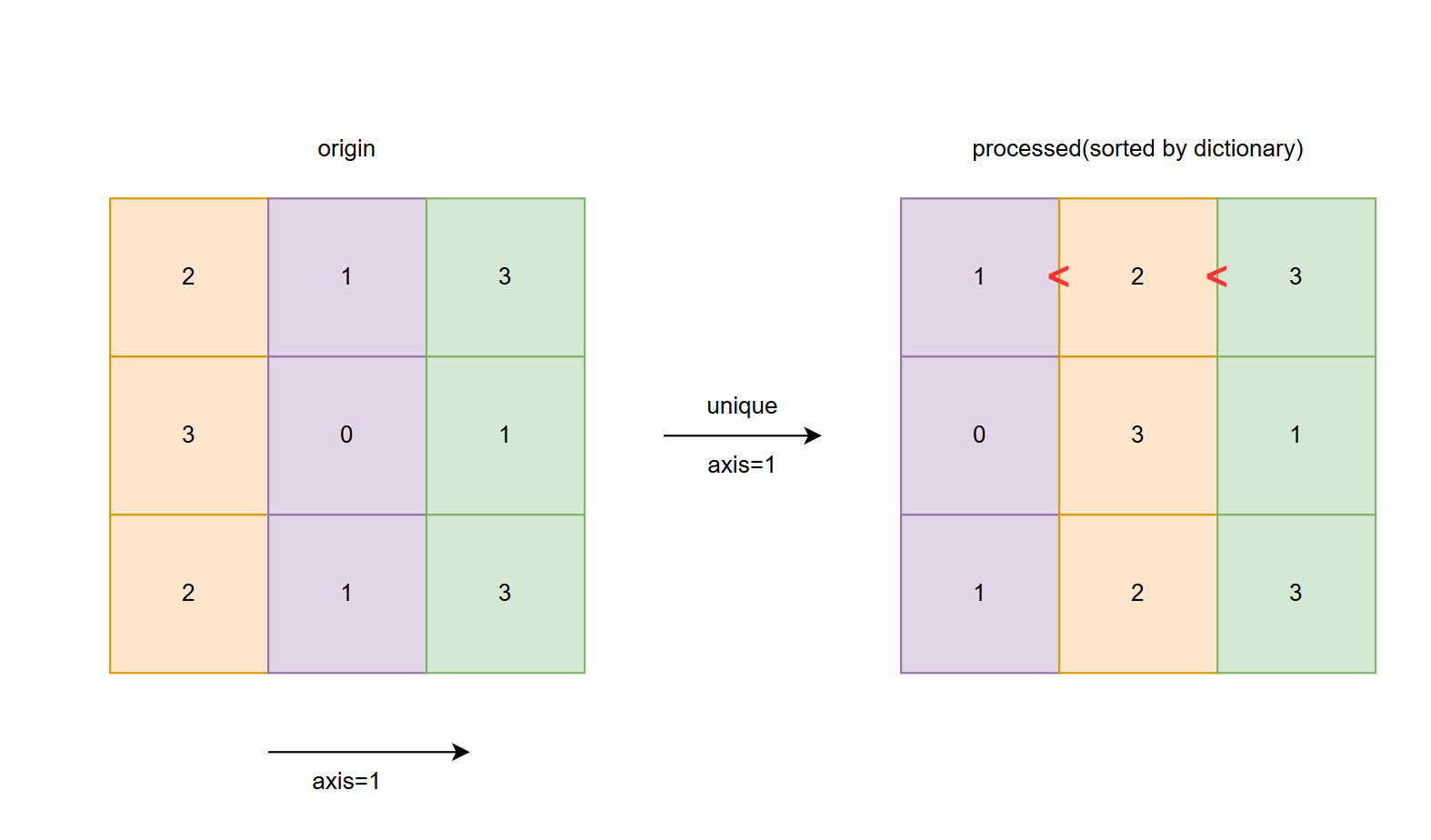unique
- paddle. unique ( x, return_index=False, return_inverse=False, return_counts=False, axis=None, dtype='int64', name=None ) [源代码]
返回 Tensor 按升序排序后的独有元素。
示例图解说明:
图一展示了代码中一维张量通过 unique 操作去重排序后得到的新的一维张量。我们将原张量各个元素的索引记为 index,新张量的索引记为 new index,原张量中各个元素出现次数记为 counts。那么输出 indices 即是新张量下 index 的排列顺序,inverse 即是原张量下 new index 的排列顺序。例如,在新张量[1,2,3,5]中,各元素的 new index 为 0,1,2,3,把 new index 对应到原张量,即是[1,2,2,0,3,2],这就是我们输出的 inverse。
图二展示了代码中形状为[3,3]的二维张量通过 unique 操作(axis=0)去重排序后得到新的形状为[2,3]的二维张量,新的二维张量会按照字典序进行排列。
图三展示了代码中形状为[3,3]的二维张量通过 unique 操作(axis=1)去重排序后得到新的形状为[3,3]的二维张量。由于没有重复的列向量,因此只会进行列的字典排序,注意输出的时候是按照行优先的顺序进行输出。
参数
x (Tensor) - 输入的 Tensor ,数据类型为:float32、float64、int32、int64。
return_index (bool,可选) - 如果为 True,则还返回独有元素在输入 Tensor 中的索引。
return_inverse (bool,可选) - 如果为 True,则还返回输入 Tensor 的元素对应在独有元素中的索引,该索引可用于重构输入 Tensor。
return_counts (bool,可选) - 如果为 True,则还返回每个独有元素在输入 Tensor 中的个数。
axis (int,可选) - 指定选取独有元素的轴。默认值为 None,将输入平铺为 1-D 的 Tensor 后再选取独有元素。
dtype (str|paddle.dtype|np.dtype,可选) - 用于设置
index,inverse或者counts的类型,应该为 int32 或者 int64。默认:int64。name (str,可选) - 具体用法请参见 api_guide_Name,一般无需设置,默认值为 None。
返回
out (Tensor) - 独有元素构成的 Tensor,数据类型与输入一致。
index (Tensor,可选) - 独有元素在输入 Tensor 中的索引,仅在
return_index为 True 时返回。inverse (Tensor,可选) - 输入 Tensor 的元素对应在独有元素中的索引,仅在
return_inverse为 True 时返回。counts (Tensor,可选) - 每个独有元素在输入 Tensor 中的个数,仅在
return_counts为 True 时返回。
代码示例
>>> import paddle
>>> x = paddle.to_tensor([2, 3, 3, 1, 5, 3])
>>> unique = paddle.unique(x)
>>> print(unique)
Tensor(shape=[4], dtype=int64, place=Place(cpu), stop_gradient=True,
[1, 2, 3, 5])
>>> _, indices, inverse, counts = paddle.unique(x, return_index=True, return_inverse=True, return_counts=True)
>>> print(indices)
Tensor(shape=[4], dtype=int64, place=Place(cpu), stop_gradient=True,
[3, 0, 1, 4])
>>> print(inverse)
Tensor(shape=[6], dtype=int64, place=Place(cpu), stop_gradient=True,
[1, 2, 2, 0, 3, 2])
>>> print(counts)
Tensor(shape=[4], dtype=int64, place=Place(cpu), stop_gradient=True,
[1, 1, 3, 1])
>>> x = paddle.to_tensor([[2, 1, 3], [3, 0, 1], [2, 1, 3]])
>>> unique = paddle.unique(x)
>>> print(unique)
Tensor(shape=[4], dtype=int64, place=Place(cpu), stop_gradient=True,
[0, 1, 2, 3])
>>> unique = paddle.unique(x, axis=0)
>>> print(unique)
Tensor(shape=[2, 3], dtype=int64, place=Place(cpu), stop_gradient=True,
[[2, 1, 3],
[3, 0, 1]])


